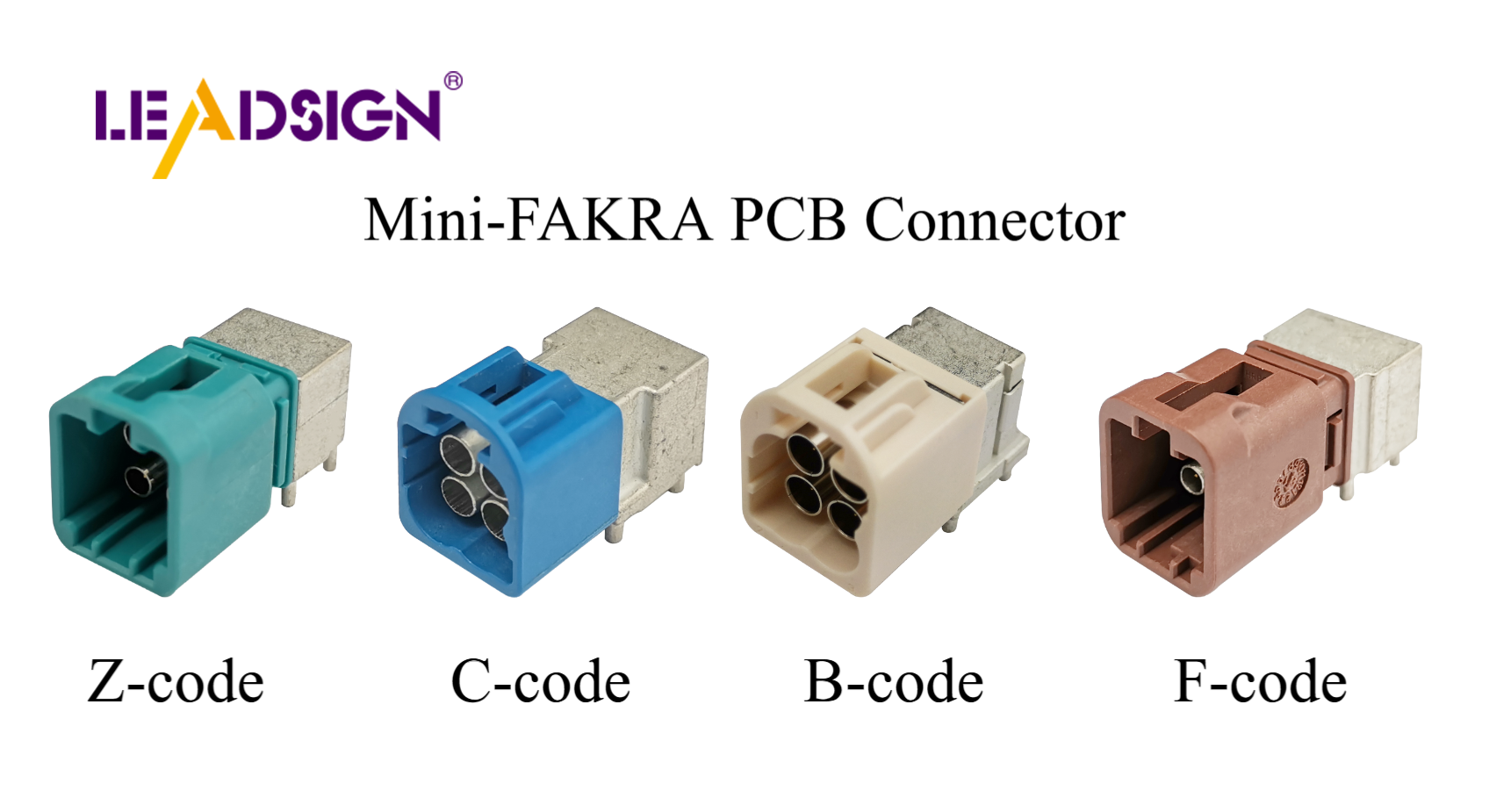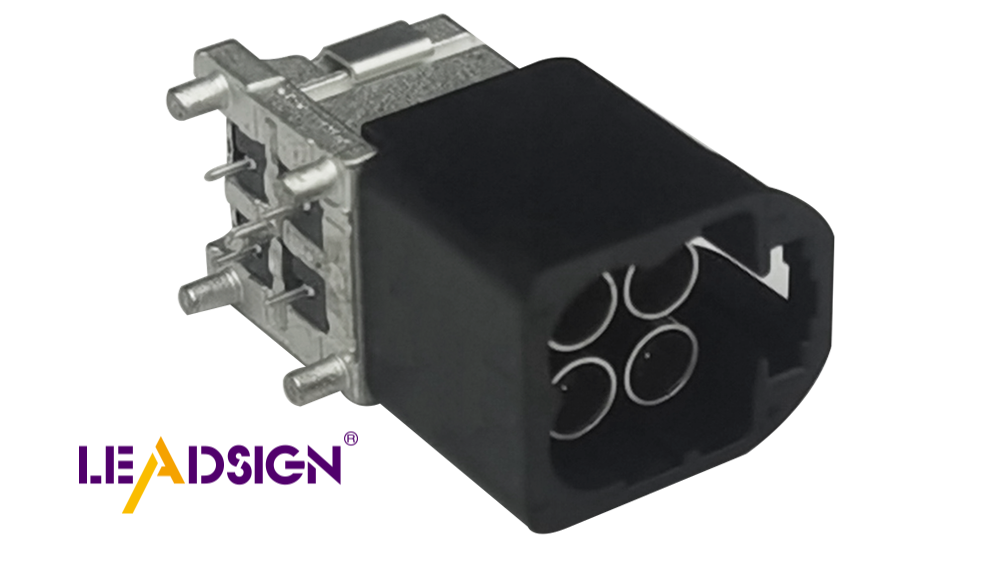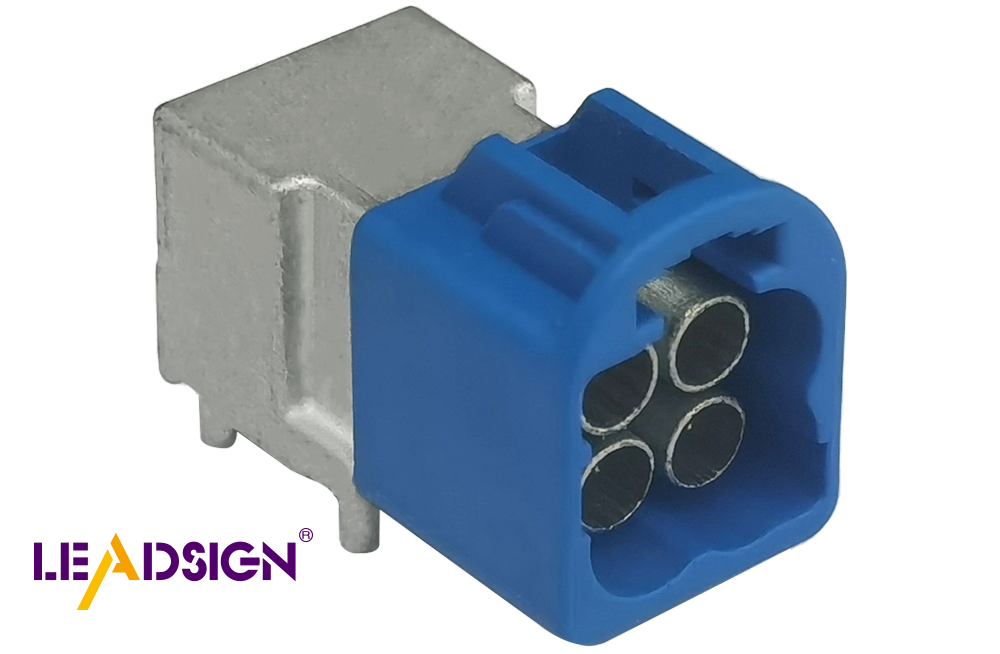The Role of High-Speed Automotive Connectors in Wiring Miniaturization

The car industry needs smaller and better wiring systems. New tech like self-driving and driver assistance systems require compact designs. High-Speed Automotive Connectors are crucial for this, as they enable fast and reliable communication between electronic components. This supports features such as cruise control, blind-spot monitoring, and collision avoidance. Smaller connectors, like Mini-FAKRA, optimize space while still delivering rapid data transmission. This enhances the performance and aesthetics of modern vehicles.
Key Takeaways
High-speed automotive connectors are essential for enabling advanced features in modern vehicles, such as self-driving and driver assistance systems.
Connectors like Mini-FAKRA save up to 80% in space and reduce wiring weight by about 75%, leading to more efficient and aesthetically pleasing car designs.
These connectors support data transmission at frequencies up to 20 GHz and speeds of 28 Gbps, ensuring quick and reliable communication between vehicle components.
High-speed connectors are built to withstand tough automotive conditions, meeting strict industry standards for safety and reliability.
The transition to Mini Coax connectors enhances vehicle performance and energy efficiency, making them ideal for electric and hybrid cars.
Collaboration between designers and manufacturers is crucial for developing innovative connectors that meet the evolving needs of the automotive industry.
As vehicle technology advances, high-speed connectors will continue to play a vital role in supporting new features and improving overall vehicle safety.
Understanding High-Speed Automotive Connectors

Definition and Importance
What are high-speed automotive connectors?
High-speed automotive connectors help electronic systems in cars share data quickly. They connect parts like sensors, cameras, and control units. These connectors make advanced features like self-driving and entertainment systems work smoothly. They send large amounts of data fast and without problems.
These connectors are small and strong. They can handle tough conditions like heat and shaking. The Mini-FAKRA connector is a great example. It is tiny but works very well. It can handle signals up to 20 GHz and speeds up to 28 Gbps. This makes it very important for modern cars.
Why are they essential for modern vehicles?
Modern cars need electronics to work and stay safe. High-speed connectors help these systems share data in real-time. This is important for features like crash prevention and lane-keeping. Without these connectors, self-driving and safety systems wouldn’t work.
Electric and connected cars need these connectors even more. As cars get smarter, they need better data sharing. High-speed connectors also make wires smaller, saving space and weight. This improves how cars look and perform.
Key Applications
Use in radars, LiDAR, and complex sensors
Radars, LiDAR, and sensors need high-speed connectors to work well. These sensors collect data to help cars understand their surroundings. The connectors send signals fast and clearly, helping sensors detect objects accurately. This is key for self-driving and safety features.
Small connectors like the Mini-FAKRA fit into tight spaces in sensors. This helps place sensors better around the car. By sending data quickly, these connectors help sensors give real-time updates to the car’s computer.
Role in driver assistance, autopilot systems, and safety-critical applications
Driver assistance and autopilot systems rely on high-speed connectors to share data. These systems need fast communication to work right. For example, connectors send data from cameras and sensors to control units. This allows features like automatic braking and blind-spot checks.
In safety systems, reliability is very important. High-speed connectors work well even in tough conditions. Features like Connector Position Assurance (CPA) make them dependable. As cars use more advanced tech, these connectors will become even more important for safety and efficiency.
Technical Features and Benefits of High-Speed Automotive Connectors
Data Transmission Capabilities
Handles frequencies up to 20 GHz and speeds up to 28 Gbps.
High-speed connectors send data very fast. They work with frequencies up to 20 GHz and speeds up to 28 Gbps. This helps car systems like sensors and cameras share information quickly. These connectors allow cars to process lots of data instantly. This is important for features like self-driving and driver assistance.
These connectors are better than older ones. They stay reliable even in tough conditions. This ensures systems like emergency braking work without delays. This improves both safety and performance in modern cars.
Works with Automotive Ethernet and future technologies.
High-speed connectors match Automotive Ethernet standards used in cars today. They also work with new technologies coming in the future. This makes them useful for a long time. As cars get smarter, these connectors adapt to new systems.
They are designed to block signal problems like interference. This keeps data clear and accurate. These features make them perfect for systems needing precise data sharing. By supporting current and future needs, they help cars stay advanced.
Space and Weight Savings
Saves up to 80% space with Mini Coax and modular designs.
High-speed connectors make wiring systems much smaller. Mini Coax and modular designs save up to 80% of space. This lets car makers fit more parts into smaller areas. It helps create sleek and efficient car designs.
Even though they are small, these connectors still work very well. They send data fast while taking up little space. This makes them great for radars, LiDAR, and entertainment systems. Smaller wiring also makes cars look better and work more efficiently.
Cuts weight by about 75% compared to older systems.
These connectors also make wiring lighter. They reduce weight by about 75% compared to older systems. Lighter wiring helps cars use less fuel and perform better. It makes the car easier to handle and more energy-efficient.
The smaller size and lighter weight don’t lower their quality. These connectors are a top choice for car makers. They support the move toward electric and hybrid cars. This helps create greener and smarter vehicles.
Compliance and Reliability
Meets strict automotive standards.
High-speed connectors follow strict car industry rules. These rules ensure they are safe and reliable. They work well in tough conditions like heat and shaking. This makes them dependable for important car systems.
These connectors are perfect for safety systems like lane-keeping. They ensure these systems work correctly every time. Their reliability is key for modern car designs.
Includes Connector Position Assurance (CPA) for safety.
Connector Position Assurance (CPA) keeps connectors securely in place. This is very important for safety systems. It prevents connectors from coming loose, which could cause problems.
CPA adds extra safety to these connectors. Their strong design makes them trustworthy. They are a key part of making cars smarter and safer.
Enabling Wiring Miniaturization

Transition from Traditional Systems to Mini Coax
Benefits of Mini Coax over older FAKRA systems.
Switching from old FAKRA systems to Mini Coax has changed car wiring. Mini Coax connectors work better and are more efficient. They handle frequencies up to 20 GHz, making data transfer faster and more reliable. This helps advanced car tech like self-driving and safety systems.
Mini Coax connectors also make wiring much smaller. They save up to 80% of space compared to FAKRA systems. This smaller size lets car makers fit more parts in tight spaces. They also weigh about 75% less, improving fuel use and car performance. These features make Mini Coax the best choice for modern cars.
Changes to car design and structure.
Using Mini Coax connectors has improved how cars are built and designed. Their small size lets engineers create better layouts. For example, Mini Coax fits into tight spots, helping place sensors and cameras easily. This improves how cars look and work.
Lighter wiring from Mini Coax helps electric and hybrid cars. It boosts energy efficiency and makes batteries last longer. The modular design of Mini Coax also makes assembly easier and cheaper. These changes support the car industry's focus on new ideas and eco-friendly designs.
Role in Future Vehicle Networks
Helping High-Performance Computers (HPC) and car networks.
Mini Coax connectors are key for high-performance computers (HPC) and car networks. Modern cars need HPCs to process data from sensors and cameras. Mini Coax ensures fast data sharing, helping cars make quick decisions for safety and self-driving.
They also work with Ethernet-based car networks. These networks need fast and steady connections. Mini Coax handles speeds up to 28 Gbps, meeting these needs. This helps cars manage more complex electronic systems.
Ready for future uses and systems.
Mini Coax connectors are built to work with future car tech. Their high-frequency and modular design fit new technologies. For instance, newer Mini Coax versions work at 17 GHz, matching next-gen systems.
As cars advance, Mini Coax will support new features like better entertainment and safety tech. They can grow with new ideas, keeping them important for future car networks.
Future Trends and Challenges
New Ideas in Design and Making Connectors
Modular housings save up to 50% of space.
Car makers want smaller and better parts. Modular housings are a smart solution, saving up to 50% of space. These housings help engineers make small systems that still work well. Smaller connectors let cars have more features and look stylish.
This idea matches the need for tiny car parts. For example, fiber optic housings by Optomer show how modular designs work. These designs save space and improve how fast systems work. Even in tight spots, these housings stay strong and reliable.
Cheaper ways to make connectors like stamping and auto assembly.
Making car parts cheaply is very important. Companies now use stamping and automatic assembly to save money. Stamping cuts waste and makes parts more exact. Automatic assembly speeds up work and keeps quality high.
These methods lower costs but keep parts reliable. For example, Xmultiple's RJ connectors with LEDs show how smart making can help. Using these ways, companies make fast connectors that fit modern cars without costing too much.
Teamwork Between Designers and Makers
Working together early helps create better connectors.
Designers and makers need to work together early to make great connectors. Designers think of new ideas, and makers know how to build them. This teamwork makes sure designs are smart and easy to produce.
For instance, modular housings became smaller because engineers and makers worked closely. Early teamwork fixes problems, improves designs, and saves money. This way, the final product is both creative and useful.
Trying new ways to connect and share data.
Finding new ways to connect parts makes connectors better. Engineers test new materials and designs to improve speed, strength, and cost. These changes make connectors work faster and last longer.
Patents like Xmultiple's RJ connectors with LEDs show how new ideas change the industry. By testing new designs, companies make connectors that send data quickly and stay small. These improvements help future car tech stay advanced and reliable.
High-speed car connectors help improve vehicle technology. They allow smaller and better wiring systems. These connectors send data quickly and save space. They are important for systems like ADAS, entertainment, and self-driving cars. Switching from old FAKRA to mini connectors shows their value. They boost performance, safety, and eco-friendliness in modern cars. Designers and makers working together will keep improving these connectors. This teamwork will create smarter and safer car networks for the future.
FAQ
Why are high-speed connectors important in cars?
High-speed connectors help car parts share data quickly and reliably. Advanced systems like self-driving, safety features, and entertainment need them. They make these systems work smoothly, improving safety and user experience.
How do high-speed connectors make wiring smaller?
High-speed connectors, like Mini-FAKRA, shrink and lighten wiring systems. They save up to 80% of space and cut weight by 75%. This helps car makers design smaller, better cars without losing performance.
What is special about Mini-FAKRA connectors?
Mini-FAKRA connectors are small but very powerful. They handle frequencies up to 20 GHz and speeds up to 28 Gbps. Their modular design saves space, making them perfect for tight spots in cars.
Can high-speed connectors work with future car tech?
Yes, high-speed connectors are ready for new car technologies. They follow Automotive Ethernet rules and fit future systems. This makes them useful for advanced computers and car networks.
What systems use high-speed connectors the most?
High-speed connectors are key for radars, LiDAR, cameras, and sensors. They also help driver-assistance and safety systems work fast and accurately. These connectors are vital for real-time decisions in cars.
How do high-speed connectors make cars safer?
High-speed connectors let safety systems share data instantly. Features like Connector Position Assurance (CPA) keep them secure. This ensures systems like automatic braking and lane-keeping work properly.
Do high-speed connectors help save energy?
Yes, high-speed connectors make wiring lighter, saving energy. Lighter wires improve fuel use and battery life in electric cars. This supports greener and smarter car designs.
What problems do makers face with high-speed connectors?
Makers must meet strict rules, handle tough conditions, and cut costs. Ideas like modular designs and automated assembly help solve these issues. This makes connectors cheaper and more reliable.
Why is teamwork important for making connectors?
Designers and makers must work together to create great connectors. Early teamwork ensures designs are smart and easy to build. This leads to better and more useful solutions for cars.
How do high-speed connectors help self-driving cars?
High-speed connectors send data fast between sensors, cameras, and controls. They help systems like LiDAR and radars give accurate updates. This is crucial for safe and efficient self-driving cars.
See Also
Boosting Data Transfer: Significance of Fast Automotive Connectors
Benefits of Rapid FAKRA-Mini Connectors for Automotive Applications
Discovering Opportunities: Fast FAKRA-Mini Connectors in Automotive
Exploring Benefits of Mini FAKRA Connectors in Vehicle Systems
Optimizing Space Utilization: Strength of Mini FAKRA Connectors in Cars

